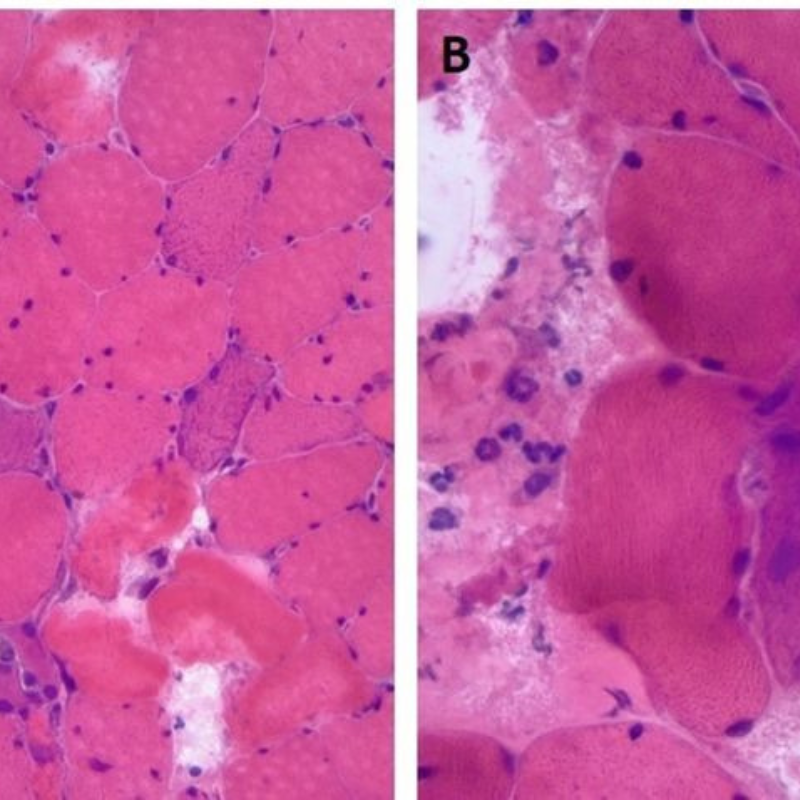Necrotizing Myopathy
About Necrotizing Myopathy

Necrotizing myopathy, also known as necrotizing autoimmune myopathy (NAM) or immune-mediated necrotizing myopathy (IMNM),
was once believed to be a rare form of muscle disease, but has recently been recognized as a prevalent form of muscle inflammation. It typically causes muscle weakness in the limbs closest to the core, accompanied by elevated creatine kinase levels and weakness in other muscles, including breathing and swallowing muscles. In some cases, the ability to hold the head upright is also affected.
Heart muscle involvement is uncommon, but there is a potential association with cancer in adults. The exact cause of NM is unknown, but around 60% of patients have autoantibodies directed against HMGCR or SRP. Statin medications or dietary statins may trigger NM in some cases, but many patients have never taken such drugs. Unlike other forms of myositis, muscle biopsies in NM show cell death (necrosis) with little to no inflammation, but the presence of autoantibodies and improvement of symptoms with anti-inflammatory drugs or intravenous immune globulin supports the classification of NM as an autoimmune disease.
What are symptoms of Polymyositis?
Polymyositis is a rare autoimmune disease that affects the skeletal muscles, causing inflammation and progressive muscle weakness. The symptoms of polymyositis can vary widely, but some common ones include:
- Muscle weakness: This is the most common symptom of dermatomyositis and can affect any muscle group, but usually affects the proximal muscles (hips, shoulders, neck).
- Skin rash: A characteristic rash on the face, chest, back, hands, and/or elbows is a common symptom of dermatomyositis. The rash often appears before the muscle weakness.
- Difficulty swallowing: This can occur if the muscles responsible for swallowing are affected.
- Fatigue: Many people with dermatomyositis experience extreme fatigue and weakness, even with minimal activity.
- Joint pain: Joint pain and stiffness may be present, especially in the morning.
- Shortness of breath: This can occur if the muscles responsible for breathing are affected.
- Raynaud's phenomenon: This is a condition in which the fingers or toes turn white or blue in response to cold or stress.
